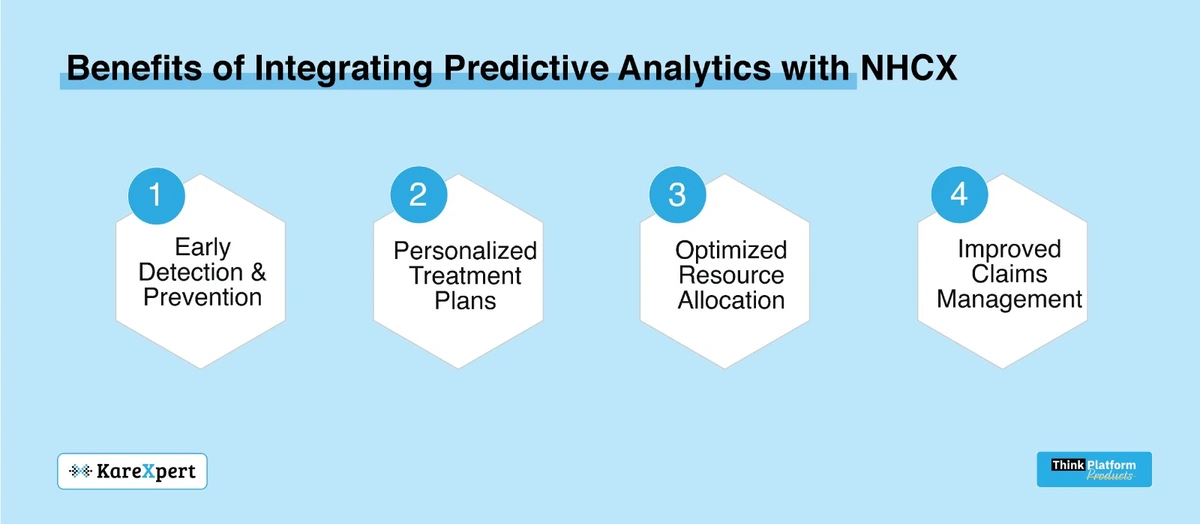The Health Crystal Ball: NHCX’s AI Oracle Predicts Your Medical Future

In the modern healthcare landscape, the integration of advanced technologies is essential for improving patient outcomes and streamlining operations. One such groundbreaking advancement is the National Health Claims Exchange (NHCX), which, when combined with predictive analytics, has the potential to revolutionize healthcare delivery. This article explores how leveraging predictive analytics through NHCX can lead to better health outcomes, enhance operational efficiency, and ensure more personalized care.
Understanding NHCX
The National Health Claims Exchange (NHCX) operates as a unified platform designed to facilitate seamless communication among different components of the healthcare system. It connects payers (insurance companies, TPAs, state health agencies), providers (hospitals, diagnostic centers, pharmacies), and insured individuals. By enabling efficient sharing of health and insurance information, NHCX streamlines the claims process and ensures transparency and accuracy in healthcare transactions.
Introduction to Predictive Analytics in Healthcare
Predictive analytics involves the use of data, statistical algorithms, and machine learning techniques to identify the likelihood of future outcomes based on historical data. In healthcare, predictive analytics can forecast patient health trends, predict disease outbreaks, and optimize resource allocation. When integrated with NHCX, predictive analytics offers a powerful tool for enhancing health outcomes.
Benefits of Integrating Predictive Analytics with NHCX

1. Early Detection and Prevention
By analyzing patient data across various health conditions, predictive analytics can identify early warning signs of potential health issues. This enables healthcare providers to intervene proactively, preventing the onset of chronic diseases and reducing the need for intensive treatments.
2. Personalized Treatment Plans
Predictive analytics leverages patient data to create personalized treatment plans tailored to individual health needs. This approach ensures that patients receive the most effective treatments, leading to better health outcomes and increased patient satisfaction.
3. Optimized Resource Allocation
Healthcare facilities can use predictive analytics to forecast patient influxes, optimize staff schedules, and manage resources more efficiently. This reduces wait times, enhances patient flow, and ensures that healthcare providers are adequately equipped to handle peak periods.
4. Improved Claims Management
NHCX streamlines the claims process by providing accurate and up-to-date patient information. Predictive analytics further enhances this process by identifying patterns in claims data, detecting anomalies, and preventing fraud. This leads to faster claims processing and reduced administrative costs.
How Predictive Analytics Works with NHCX
Predictive analytics uses historical and real-time data from the NHCX platform to generate insights and predictions. Here’s how it works:
1. Data Collection and Integration
NHCX collects a vast amount of data from various sources, including electronic health records (EHRs), insurance claims, and patient interactions. This data is integrated into a unified platform, creating a comprehensive dataset for analysis.
2. Data Analysis
Advanced algorithms and machine learning models analyze the integrated data to identify patterns, trends, and correlations. This analysis helps healthcare providers understand patient health trends, predict disease outbreaks, and identify potential risk factors.
3. Predictive Modelling
Using the insights gained from data analysis, predictive models are developed to forecast future health events. These models are continuously refined and updated as new data is collected, ensuring accurate and reliable predictions.
4. Actionable Insights
The predictive models generate actionable insights that healthcare providers can use to make informed decisions. These insights include early warning signals for diseases, recommendations for personalized treatment plans, and strategies for optimizing resource allocation.
Real-World Applications
Several healthcare organizations have successfully implemented predictive analytics with NHCX to improve health outcomes. Here are some real-world applications:
1. Chronic Disease Management
Predictive analytics can identify patients at risk of developing chronic conditions such as diabetes and cardiovascular diseases. By intervening early, healthcare providers can manage these conditions more effectively, reducing complications and improving patient quality of life.
2. Population Health Management
By analyzing population health data, healthcare organizations can identify trends and patterns that inform public health strategies. This helps in designing targeted interventions to address specific health issues within different communities.
3. Emergency Care Optimization
Predictive analytics can forecast patient influxes in emergency departments, allowing hospitals to allocate resources more effectively. This reduces wait times, improves patient flow, and ensures that emergency care is delivered promptly.
4. Fraud Detection in Claims
Integrating predictive analytics with NHCX helps identify suspicious patterns in insurance claims, reducing the risk of fraud. This leads to faster claims processing, lower administrative costs, and increased trust in the healthcare system.
Challenges and Considerations
While the benefits of integrating predictive analytics with NHCX are substantial, there are challenges to consider:
1. Data Privacy and Security
The use of predictive analytics requires access to sensitive patient data. Ensuring data privacy and security is paramount to protect patient information and comply with regulations such as HIPAA and GDPR.
2. Data Quality and Standardization
High-quality, standardized data is essential for accurate predictive modeling. Healthcare organizations must ensure that data collected from different sources is accurate, consistent, and reliable.
3. Technical Expertise
Implementing predictive analytics requires technical expertise in data science, machine learning, and healthcare informatics. Healthcare organizations may need to invest in training or hiring skilled professionals to manage these technologies effectively.
Future Directions
As technology continues to evolve, the potential for predictive analytics in healthcare will only grow. Integrating advanced technologies such as artificial intelligence (AI) and the Internet of Things (IoT) with NHCX will further enhance the capabilities of predictive analytics. These advancements will lead to more precise predictions, improved health outcomes, and a more efficient healthcare system.
Conclusion
Harnessing predictive analytics with NHCX offers a transformative approach to healthcare delivery. By leveraging data-driven insights, healthcare providers can improve patient outcomes, optimize resource allocation, and enhance claims management. While challenges remain, the potential benefits make it a worthwhile investment for healthcare organizations seeking to stay ahead in the rapidly evolving healthcare landscape.
Ready to transform your healthcare delivery with predictive analytics and NHCX? Contact KareXpert today to learn more about our advanced solutions and how they can help you achieve improved health outcomes.
